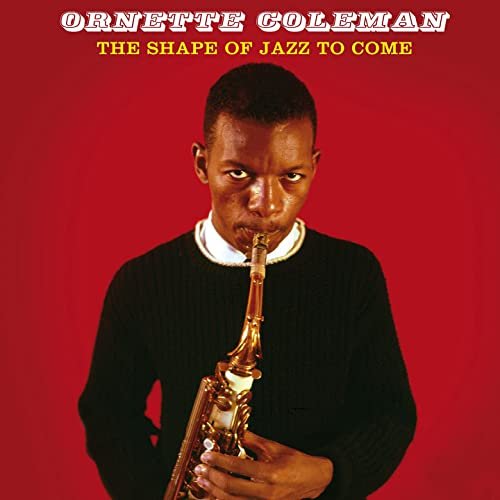Ornette Coleman - The Shape of Jazz to Come (Bonus Track Version) (2021)

Artist: Ornette Coleman
Title: The Shape of Jazz to Come (Bonus Track Version)
Year Of Release: 1959/2021
Label: Icon Jazz Series
Genre: Jazz
Quality: 320 kbps | FLAC (tracks)
Total Time: 01:11:35
Total Size: 165 mb | 416 mb
WebSite: Album Preview
Tracklist:Title: The Shape of Jazz to Come (Bonus Track Version)
Year Of Release: 1959/2021
Label: Icon Jazz Series
Genre: Jazz
Quality: 320 kbps | FLAC (tracks)
Total Time: 01:11:35
Total Size: 165 mb | 416 mb
WebSite: Album Preview
01. Ornette Coleman - Lonely Woman
02. Ornette Coleman - Eventually
03. Ornette Coleman - Peace
04. Ornette Coleman - Focus on Sanity
05. Ornette Coleman - Congeniality
06. Ornette Coleman - Chronology
07. Ornette Coleman - Monk and the Nun
08. Ornette Coleman - Just for You
09. Ornette Coleman - Tears Inside (Bonus Track)
10. Ornette Coleman - Compassion (Bonus Track)
11. Ornette Coleman - Rejoicing (Bonus Track)
12. Ornette Coleman - The Blessing (Bonus Track)
13. Ornette Coleman - When Will the Blues Leavethe Blessing? (Bonus Track)
Ornette Coleman's Atlantic debut, The Shape of Jazz to Come, was a watershed event in the genesis of avant-garde jazz, profoundly steering its future course and throwing down a gauntlet that some still haven't come to grips with. The record shattered traditional concepts of harmony in jazz, getting rid of not only the piano player but the whole idea of concretely outlined chord changes. The pieces here follow almost no predetermined harmonic structure, which allows Coleman and partner Don Cherry an unprecedented freedom to take the melodies of their solo lines wherever they felt like going in the moment, regardless of what the piece's tonal center had seemed to be. Plus, this was the first time Coleman recorded with a rhythm section bassist Charlie Haden and drummer Billy Higgins that was loose and open-eared enough to follow his already controversial conception. Coleman's ideals of freedom in jazz made him a feared radical in some quarters; there was much carping about his music flying off in all directions, with little direct relation to the original theme statements. If only those critics could have known how far out things would get in just a few short years; in hindsight, it's hard to see just what the fuss was about, since this is an accessible, frequently swinging record. It's true that Coleman's piercing, wailing alto squeals and vocalized effects weren't much beholden to conventional technique, and that his themes often followed unpredictable courses, and that the group's improvisations were very free-associative. But at this point, Coleman's desire for freedom was directly related to his sense of melody which was free-flowing, yes, but still very melodic. Of the individual pieces, the haunting "Lonely Woman" is a stone-cold classic, and "Congeniality" and "Peace" aren't far behind. Any understanding of jazz's avant-garde should begin here.


![Mark Northam - More Music From The Pixar Films For Solo Piano (2025) [Hi-Res] Mark Northam - More Music From The Pixar Films For Solo Piano (2025) [Hi-Res]](https://img.israbox.com/img/2025-12/17/qc8ci6ocl25zt4m9ojnjn3k2k.jpg)
![Don Cherry, Nana Vasconcelos & Collin Walcott - Codona (1979/2025) [Hi-Res] Don Cherry, Nana Vasconcelos & Collin Walcott - Codona (1979/2025) [Hi-Res]](https://www.dibpic.com/uploads/posts/2025-12/1765970766_cover.jpg)




![Dave Bainbridge - ON THE EDGE (OF WHAT COULD BE) (2025) [Hi-Res] Dave Bainbridge - ON THE EDGE (OF WHAT COULD BE) (2025) [Hi-Res]](https://img.israbox.com/img/2025-12/18/7l4en830rpyaxdtr7izc3qrx6.jpg)